After you’ve been riding a quad for some time, you start building experience and confidence. It only makes sense to want to build some jumps in the backyard. Sure, a full on motocross track would be great, but not everyone has the time or space for that. Besides, you’d be surprised what you can do with just a little space, and how much fun you can have riding on a small track.
The topics I go over in this article can be used for any size space you have available, and you can make your track as big or as small as you’d like. But, the first step is planning.
When you start planning your ATV riding track, there are a lot of things to consider. Before you even start designing the layout, there is planning to do. First, you need to pick the site. This is important, and you don’t want to end up with legal problems later on down the road.
If you have neighbors close by, be prepared for noise complaints. I know, I thought everyone loved the sound ripping engines all day too. I can’t for the life of me figure out why, but they don’t. If you get dry seasons where you live, then you have to worry about dust kicking up too. A fence could help with the noise and dust, but you’ll need to check with your local building department about any setback requirements, and putting in a fence adds to the cost of the track. If you can, find a place with plenty of room where it bother the neighbors.
Water will always find its way to the lowest point, and will cause erosion on its way there. If you can find a naturally sloped area to build your track, then great. Otherwise you may end up putting in drainage pipes or sloping the terrain yourself. Take care to think about erosion control while you choose your location and start your planning. If you do install drainage pipes, keep in mind that they need to be covered with a fair amount of dirt. The ATV’s you plan on riding on the track will destroy most drain pipes over time.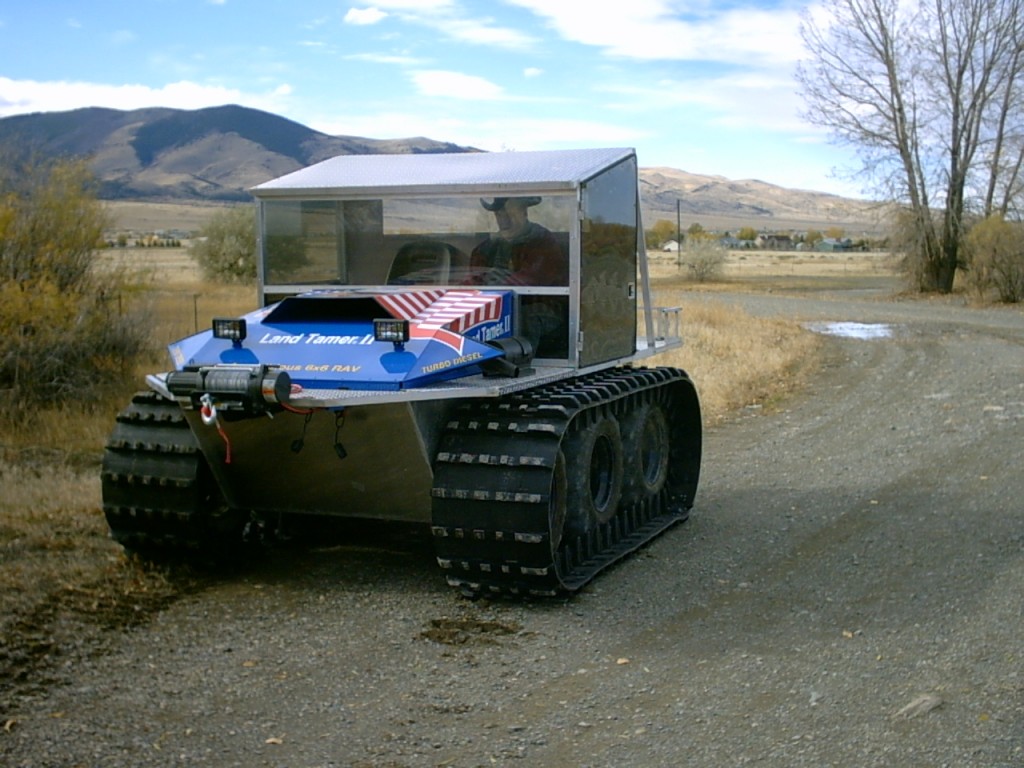
You don’t want to get sued. You will probably want to allow people over to ride on your track at some point. Having it all to yourself is great, but sooner or later, you’ll want to ride with other people. Talk with your insurance agent to find out what your policy covers. Your insurance might go up if you want to allow visitors to ride ATV’s on your property. Accidents happen, talk with a lawyer to find out what would happen if someone got hurt on your property. In some cases, even a trespasser could sue you for damages if your track wasn’t properly fenced off. I’ve even been to places where I had to sign a waiver, basically saying I won’t sue if I get hurt.
If you can avoid having to buy dirt to build your track, you’re already ahead of the game. Buying dirt can be expensive, try to only buy dirt if you have to. I recommend working with the natural terrain. This will be done differently for every piece of land, but try to locate any hills and use them to your advantage.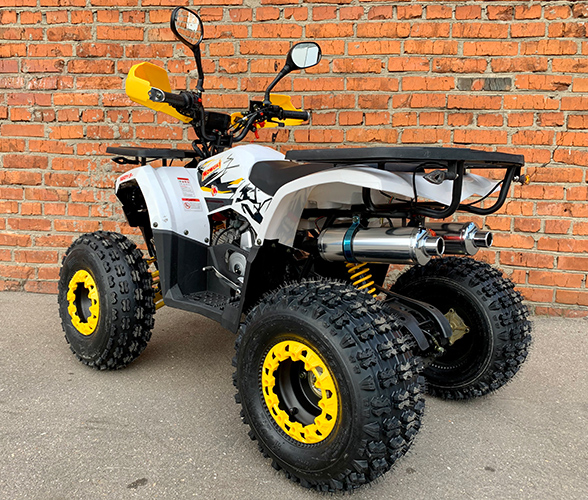
It may be a good idea, if you have the space, to dig a pond near the track, and use the dirt from that to build the track with. You could dig out the side of a hill, use the hillside as a berm, and use the dirt for some tabletops or jump ramps. You have to get creative here if you want to save yourself from buying dirt. If you do end up needing to buy dirt, loamy soil works best but is the most expensive. Clay based soil holds its shape better, but sandy soil drains better. Loamy soil is a good medium between the two. I lean more towards clay based soil because I like the track to hold up over time.
Once you have all the approvals and a good spot picked out, its time to start designing the track.
For me, this is the fun part. I just love planning out what’s going to go on the track, to me, it’s exciting. The first step here, is decide what type of track you want to build. Maybe you want more of a supercross style track as opposed to motocross. Or maybe you just want a few whoops and jumps with a more natural feel to the track.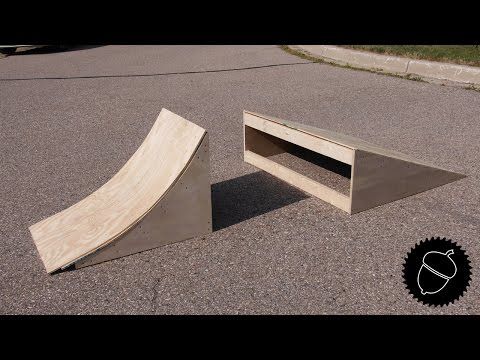
The type of terrain you have to work with might affect your decision too. If you have a super flat piece of land you might consider a supercross track, if you don’t mind bringing in a lot of dirt. If you have more hilly terrain, I would go with a more natural track or a motocross style track.
Also keep in mind why you’re building the track in the first place. What skills do you want to improve on and what type of riding do you enjoy the most? If you want to work on speed and cornering, I would go for motocross or a natural terrain track. If you can’t get enough of the jumping, level an area and build jumps, supercross style. If you’re building this for fun, I would go with a bit of a combination. Mostly natural terrain, but with enough obstacles to keep it fun.
Actually starting the design is very different depending on which type of track you chose to go with. If you want a more supercross style track, you will need very accurate drawn up plans of every obstacle and where they will go.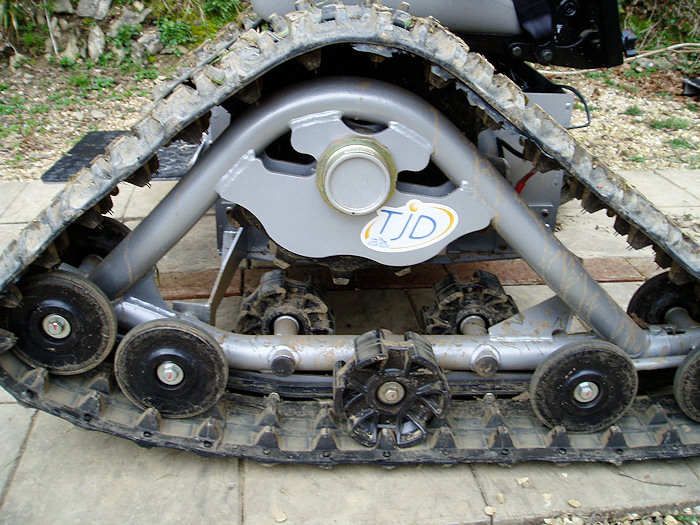 A more natural motocross style track, you can basically wing it, I wouldn’t even worry about drawing up plans.
A more natural motocross style track, you can basically wing it, I wouldn’t even worry about drawing up plans.
To start with a supercross track, create a scale drawing to work with. Supercross is entirely man made, you will need to flatten a good portion of land to make one of these. Try to design long straight lanes, that way you can put bigger obstacles in your track. Keep it simple with complete 180 degree turn arounds back to back. It would look like a series of parallel straight aways at first. Then add your obstacle in. You will need a lot more dirt to build this type of track.
If you want to go with a natural terrain track, there’s no need for planning or drawing. You could simply scout out your area on your ATV and sort of free ball it. Try to make the most of the land you have to use. Hills are great spots to create banks, step-ups, step-downs, berms, jumps, and so on. Avoid sharp turns, and plan using areas with available dirt. Avoid large rocks and trees that will get in the way, but keep in mind you can rent machinery to help scrape up the terrain. Creating jumps out of hills, and building upon existing features will help you. The very first tracks ever made were made out of the natural terrain, for me, that’s the way to go.
Creating jumps out of hills, and building upon existing features will help you. The very first tracks ever made were made out of the natural terrain, for me, that’s the way to go.
If you don’t want to spend hours shoveling, you may want to rent some heavy machinery. A small bulldozer could handle most of what you’re trying to do, you shouldn’t need much more than that for a small backyard ATV track. If your plan is simple enough you shouldn’t need to be carrying the dirt all that far. You will mostly be focusing on grading and shaping the existing terrain.
The bigger machines will work better and push more dirt, but they will cost more to rent. This one’s up to you, if you want to get it done fast, get a bigger dozer. You may need a water truck, or a way to get water to your track to pack the dirt down. It depends on what kind of dirt you’re dealing with, but dry dirt usually doesn’t pack very well.
If you plan on building a supercross style track, you will probably need a bucket loader or an excavator. You will need to move a lot of dirt to where it needs to go and shape the track. You probably won’t get much use out of a bulldozer though. Supercross tracks are a lot more detailed finish work, the dozer wouldn’t be useful for that.
You will need to move a lot of dirt to where it needs to go and shape the track. You probably won’t get much use out of a bulldozer though. Supercross tracks are a lot more detailed finish work, the dozer wouldn’t be useful for that.
There are some obstacle you have in mind that you just need to have. I get it, but make sure you leave yourself room for improvement later on down the road. You’ll be a lot happier with your track if you can upgrade sections as you become a better rider. You don’t want all your obstacles jumbled together anyway, it will ruin the flow of the track.
Some ideas to get you started:
Don’t make a track you’re scared to drive on, you need to ride a lot to get better.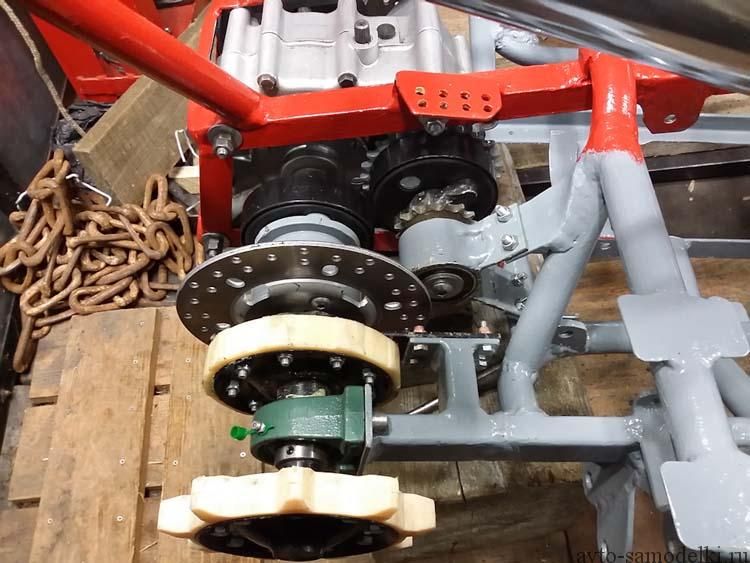 You can always upgrade the track as your skills improve.
You can always upgrade the track as your skills improve.
For a supercross track you will need some long measuring tapes, and some stakes and flags. Measure out the jump peaks and place your stakes before you start piling dirt on. Use your scale drawing and map out the entire track before hand. If you can, mark the stakes at the heights you want your obstacles to be.
For a natural terrain track you don’t really need to do any of that. I find it useful to place down a couple flags to remind me of where I planned certain obstacle. I also mark where I want to scuff up the terrain to make actual lanes to ride in around the property. Doing this also helps you to confirm if your plan for the track will actually work out or not.
You have a game plan down, you have the equipment, and everything marked out. Now comes the hard work, actually building the track. The best place to start is at the end, working your way back to the start. I suggest doing this because that way you’re not ruining the faces of the jumps with the equipment. In fact, you will always be working on the faces of the jumps if you build the track in reverse order.
In fact, you will always be working on the faces of the jumps if you build the track in reverse order.
You can do this per straight away, or work in reverse on the entire track as a whole. You can also work from the middle of a straight away outwards in both directions, especially if you build a larger obstacle in the middle of that lane. Either way, you would finish the lane and build the turns last, so you avoid ruining any berms or bowls you have planned for your corners.
This is more for a supercross track where everything is tight together. If you have a more open natural course, just do what makes sense to you. I would still recommend building any jumps or obstacles from the end to the front to keep the take off area nice.
It’s time to start piling the dirt where your obstacles are going to be. If you have a loader, grab a full bucket of dirt. Keep in mind that you will want to try grabbing the same amount of dirt every time. Get yourself into the area you will be working and line yourself up straight with the obstacle.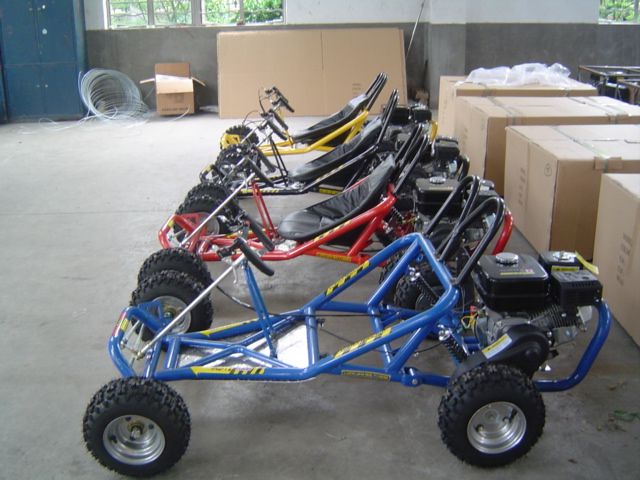 If you can get yourself head on with the jump, it will make the rest of this process a lot easier. Just try to imagine at which angle you will be approaching the jump on your quad. Dump the dirt starting at the back of the obstacle.
If you can get yourself head on with the jump, it will make the rest of this process a lot easier. Just try to imagine at which angle you will be approaching the jump on your quad. Dump the dirt starting at the back of the obstacle.
Keep adding bucket loads of dirt until you’ve created the basic shape of the obstacle. You will want to add a little more dirt to the top to compensate for packing it down. If you marked your stakes for the correct height you wanted, this part will be a lot easier. I would start by doing the sides of the jump first, then filling in the middle. Make sure your obstacle is wide enough, having everything pre-marked makes this simple, just fill the areas you staked off.
This is where a bulldozer comes in handy. To start with the bulldozer, drive over the jump with the tracks to pack everything down. It’s ok to go back and forth, make sure the entire obstacle is packed down nicely. Now use the blade of the dozer to level off the jump and smooth out the areas that the tracks ruffed up.
It’s ok to go back and forth, make sure the entire obstacle is packed down nicely. Now use the blade of the dozer to level off the jump and smooth out the areas that the tracks ruffed up.
Be sure to get rid of any bumps or indents on the jump. This is the fine tuning stage, you want to end with a nicely finished obstacle. You could also finish up the surface using the dozer. If you want better traction for your quad, leave it as is, you’re done. Fair warning though, it will be a lot more maintenance.
To pack the surface down, simply roll over the front of the jump with the tires of the loader. There will be less maintenance, and the jump will be more consistent, you will know what to expect every time you hit it. You can use the bucket of the loader to smooth out the tire tracks after you’re happy with how packed down the front of the jump is.
For a nice lane that flows well, I would consider a distance of about 30 feet between jumps. You can do a lot more than this though and still enjoy the track.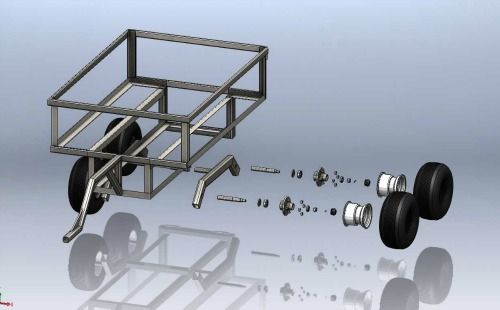 Especially on a more natural track that flows with the landscape. Make your jumps where it makes sense to, but keep in mind not to have too many obstacles close together. Unless you plan on using them together, like for take off and landing purposes.
Especially on a more natural track that flows with the landscape. Make your jumps where it makes sense to, but keep in mind not to have too many obstacles close together. Unless you plan on using them together, like for take off and landing purposes.
A good pitch for quad jumping is around 3:1. That means for every three feet your ramp is length wise, it will be one foot high. When you just naturally dump a pile of dirt, the ratio is more like 1:1, which is way too steep for a four wheeler. Of course, make the track to your liking and skill level, you can always change things later on as you improve.
Take care to keep the jump consistent all the way to the top, and side to side. If there is an indent or a hump, it could prevent the rider from leaving the jump at the top, which can be dangerous. Avoid creating any lips at the top, this could kick the rear tires up as you leave the jump.
After you’ve got the pitch you want, you will want to curve the jump a bit. Leaving it at an exact 3:1 ratio won’t give you that much lift.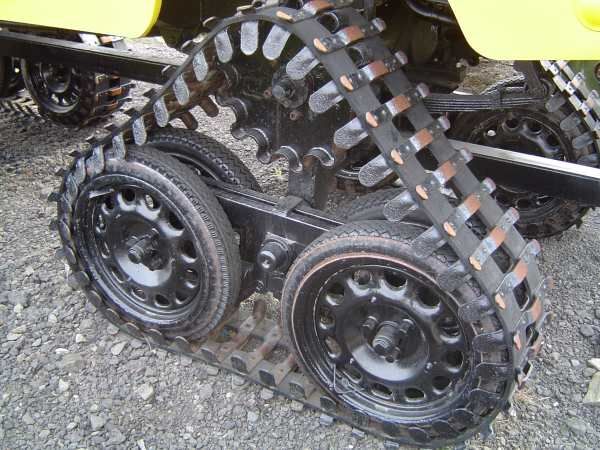 If you curve the face of the jump slightly, it will allow your suspension to compress into the ramp, and decompress on take off, giving you some nice lift.
If you curve the face of the jump slightly, it will allow your suspension to compress into the ramp, and decompress on take off, giving you some nice lift.
Take your time and make sure the ramp faces are right. Make sure your jump is lined up with the track. Double check for kickers, swells, and indents. Make sure the top edge is level. Always do a slow pass around the track to make sure everything feels right before going full throttle. It’s always best to slowly get used to a track you’ve never ridden on before, especially a newly built track.
Always wear proper safety riding gear, to check out some quality gear I put through some tough testing myself, visit the Recommended Gear section of this site. The only thing left to do is enjoy all your hard work. Be careful, it can get addicting, before you know it you’ll be building all different kinds of obstacles.
Sharing is caring!
Back
Nov.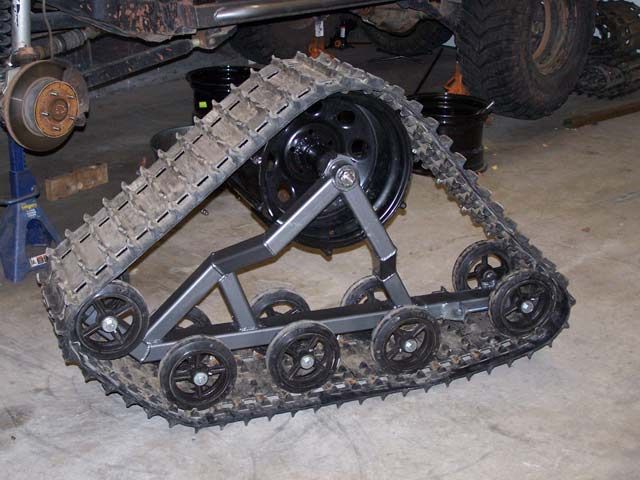 16 2021
Lifestyle
By The Cycle Exchange
16 2021
Lifestyle
By The Cycle Exchange
ATVs and UTVs are extremely popular powersports vehicles and many people enjoy taking them out to nature trails and public off-roading areas. But what if you didn’t even have to take your powersports vehicle anywhere in order to ride it? If you’ve got the space on your property, you can construct your very own ATV/UTV track for you and your friends, family and neighbors to ride at your leisure.
Follow these steps to construct a safe and legal ATV/UTV track on your property.
First, it’s important that you consider whether you can actually build a track on your property. You don’t want to dig up a bunch of turf only to discover some legal or practical reason why this isn’t going to work.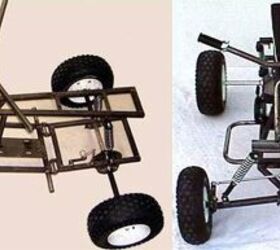 Here are some questions you’ll want to answer:
Here are some questions you’ll want to answer:
Once you’ve ironed out these logistics, you can proceed.
Your next order of business is to consider the types of riders who will ride your track. Are you aiming to build a track for children and teens or beginners to ride on? You’ll want to ensure that it’s a reasonably simple and flat track that doesn’t have any challenges beyond their skill level.
Conversely, if you’re building a track for experienced riders, you’ll want to make sure it’s fun enough for them to ride without being dangerous.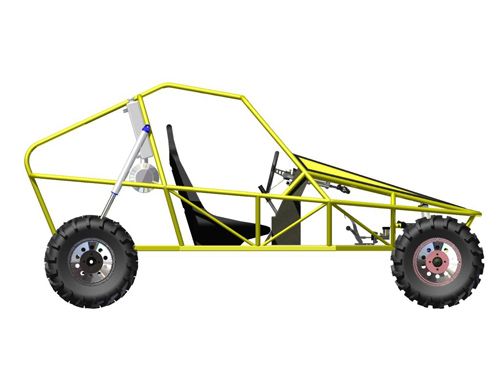
If you intend on allowing people who aren’t in your immediate family to ride on the track, it’s important to ensure that you have the insurance coverage to protect yourself from paying for medical bills or property damage.
Now you can plan how the track will look. When you’re considering where to place your jumps, try to use the slopes and other natural features already on your land so you don’t have to construct them out of nothing. This will save you time. Ensure that there is 30 feet or more of space between each jump.
A common issue with powersports tracks is drainage. If you’re building in an area that gets a lot of rain or snow, you’ll need to make sure that you have slopes or pipes installed that will help drain water away from the track.
In order to construct your track, you’ll want to rent a bulldozer or excavator that will help you to move dirt around quickly and easily. It can be helpful to have some friends with shovels to smooth and even out your work after you dig the major parts of the track.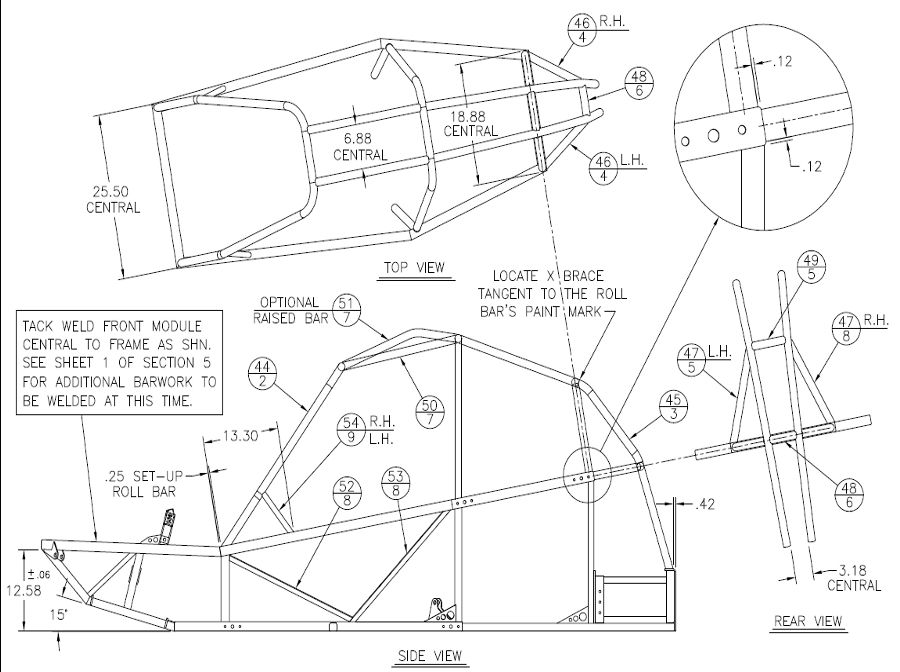 Don’t try to build a track that’s too challenging to finish; remember that you can always add onto the track later! A simpler track will be finished more quickly so everyone can ride it, and you can determine what features you may want to add after a few weeks of usage.
Don’t try to build a track that’s too challenging to finish; remember that you can always add onto the track later! A simpler track will be finished more quickly so everyone can ride it, and you can determine what features you may want to add after a few weeks of usage.
Looking to buy a new ATV or UTV? Visit one of our dealership locations in Andover or Ledgewood, New Jersey, to check out our wide stock of new and used ATVs and UTVs for sale. We also have a financing department to assist you with funding for your powersports purchase. The Cycle Exchange welcomes our customers coming from Philadelphia, Pennsylvania, and New York, New York.
See All Posts
ATVs (all-terrain vehicles) are compact and versatile vehicles. They are used for extreme recreation and sports competitions. They can effortlessly ride off-road and rough terrain. Wide wheels and a powerful engine make it easy to overcome dirt roads, potholes, ravines and slopes. Many summer residents, hunters and fishermen prefer to travel on ATVs. They can carry goods. In winter, they replace snowmobiles. A trip on such motor vehicles brings a lot of pleasant emotions. However, quad biking is an extreme form of transportation. And it is better to do it with professional instructors of the QuadRider club. Unlike motorcycles and other vehicles, they have a short wheelbase, narrow width and high center of gravity. Improper driving often leads to rollovers. Important to know how to drive an ATV correctly to avoid dangerous accidents. Appropriate training and compliance with driving rules is a guarantee of safety not only for drivers, but also for pedestrians.
Before driving an ATV, you must do the following:
Operating a vehicle without a license and skills is fraught with serious injuries and large fines.
Strictly prohibited:
The rider's weight has a big impact on the handling of the ATV. Centrifugal forces are compensated by transferring body weight to the rear or front of the vehicle. Quads are a powerful technique, prone to tipping over and slipping. Wrong driving can cost lives. In this regard, it is necessary not only to know0031 how to ride a quad bike , but also to learn the basic rack.
When riding an ATV standing up, it is easier to avoid tipping over. There are 3 main stances common among ATVs. Each of them is used in certain situations.
A dangerous stance option is a tense back and straight legs. In this position, the body cannot absorb shocks and shocks. The spine and joints are subjected to enormous loads. In this situation, control over transport worsens.
The main ATV controls are located on the steering wheel. On the right handle are: throttle trigger, differential lock switch (2WD / 4WD / LOCK) and fuse. On all-wheel drive, cargo transportation, off-road driving and slippery roads are usually carried out. The differential lock ensures the synchronous rotation of the wheels. On the left side of the steering wheel is the ignition switch, engine start button, headlight switch and horn button.
Sit in a correct and comfortable position on the ATV. Place your feet on the footrests and place your hands on the handlebars. Insert the key into the ignition switch and turn it to the "ON" mark. Then depress the brake pedal and the electric starter button. Hold the starter button for 5 seconds until the engine starts.
When the motor starts, let it run for 1 minute. In the cold season, warm it up for about 5 minutes. Before you start driving, make sure that there are no obstacles in the way (other vehicles and pedestrians). To move off, shift the gearbox to overdrive H. Release the brake pedal and gently press the gas trigger with your right thumb until you reach the desired speed.
Slow down on curves and turns. Turn as far as possible. Entering the turn, lean your whole body and lower body into the turn. If you turn right, shift your body weight to the right. If you turn left, lean your whole body to the left side. In this way, you will avoid falling and overturning the ATV.
Correct gear shifting and ATV should be carried out after it has come to a complete stop. Release the throttle lever and press the brake pedal. Move the gearshift lever to the desired position. The selected gear indicator should light up on the instrument panel. The gear lever must be in the "H" (normal high gear) or "L" (extreme low gear) position. The "R" mode is used for reverse.
Pick up speed before entering the hillock. Drive only in a straight line. Move your body forward. Maintain a smooth speed after opening the throttle. Don't lose your vigilance. Try not to drive on hills, the angle of which exceeds 25 °. Climbing a hillock or a steep slope, do not step on the gas abruptly. Drive at medium engine speeds. If the ATV begins to roll backwards while climbing a hill, get up and apply the front brake. In this case, it is not necessary to use the engine power and the rear brake. If the quad has stopped, apply the rear brake and move the gear lever to park. Put the handcuff on the transport, turn around manually and try to repeat the ascent to the hillock again. To descend, take a back stance and bend your elbows slightly. Shift into low gear. To avoid tipping over, apply both front and rear brakes at the same time. Do it smoothly. Do not press the gas trigger when descending. Do not change the set trajectory of movement.
You need to drive down the slope in low gear, moving the body towards the top of the hill. Hang your body completely on the steepest slopes. On the slopes, you can not brake sharply and pick up speed sharply. If the slope is slippery and steep, try to take a different path.
Start braking well in advance before coming to a complete stop. To slow down, release the throttle. ATVs stop quickly. But in an emergency, press the foot pedal or brake lever. Stop on a level, level surface. After stopping, shift into neutral. This will help to avoid unforeseen situations when disembarking from the vehicle.
After learning how to ride the ATV, learn how to drive on flat terrain without obstacles and other moving vehicles. Make sure the brakes are working at low speed when starting, turning and stopping. At first, try to avoid jumps and high speeds. Also, avoid jumping when riding a sports ATV. With a sufficiently high power, quadrics cannot accelerate much. But, if you press the throttle trigger hard and sharply, the torque is quickly transferred to the wheels, and the ATV can jerk forward sharply. Try to avoid dangerous obstacles. Look always ahead. Don't press hard on the gas. Concentrate on the smoothness of the movement and the maneuvers being carried out.
With this form you can leave a review about our services. We will publish it on the site. Thank you.
Message text| Ride on July 23, 2016 | |
| Ride ATVs with friends accompanied by Sergey! Everyone liked it very much! A storm of emotions and a lot of positive! The route is not boring, we rode after long rains! For such entertainment the most it !!!! We will definitely come again and again! Thanks to Sergey! Anton. | |
| View photo report | |
| Ride on March 1, 2016 | |
| Alexander, thanks for the photos. | |
| View photo report | |
| Rated July 26, 2015 and February 6, 2016 | |
| Thank you for the rides, once again we had a good time!) Maxim. | |
| View photo report | |
| Ride on February 6, 2016 | |
| Thank you very much! Everything was great! The route is not boring! A lot of positive. My wife and I were happy! Dmitriy. | |
| View photo report | |
| Ride on January 3, 2016 | |
| I decided to give a young man a ride on an ATV for his birthday and was not mistaken. | |
| View photo report | |
| Ride on December 24, 2015 | |
| Thank you so much for the rides. Sergey was the instructor. Went with my son and nephew and enjoyed it very much. An hour is optimal for the first time - so that you can get pleasure and not get tired too much. The boys were delighted, even though the track was unpretentious, and sat down in two places. We regretted that we did not take many pictures - we missed a particularly beautiful place at the beginning of the route, by the river. | |
| View photo report | |
| Skated November 1, 2015 | |
| My husband and I rode an ATV for the first time. At the very beginning, we were given equipment (they didn’t have my size, because I’m petite) 🙂 But even the fact that I was like Filippok could not spoil my mood. Everything was very cool!!! The route, of course, is extreme, I was sometimes very scared. But that's the beauty of it))) My husband really liked the birthday present!!! If in doubt with the choice of a gift for a guy, then do not hesitate to order a quad bike ride, you will not regret it. Special thanks to the organizers for the photo and video!!! Good luck and prosperity!!! By the way, I noticed a boat in your yard 🙂 maybe the boat will be rented in the summer ... I would love to swim))) Yuri and Irina. | |
| View photo report | |
| Ride on October 31, 2015 | |
| Gave a friend a ride for 25 years. | |
| View photo report | |
| Ride on October 31, 2015 | |
| Many thanks to Alexander for organizing and conducting the trip. The whole family rode: me, my wife and a seven-year-old child. The tracks are excellent slides, slopes, ditches - that's what you need! We were very pleased with the trip, we liked everything. We are planning to come again. Thanks for a great vacation! Andrew | |
| View photo report | |
| Ride on October 31, 2015 | |
| Many thanks to Alexander for organizing and Sergey for hosting the event! Mud, slides, descents, climbs, ditches, snags - got what they wanted!!! I would like to try the winter track. | |
| View photo report | |
| Skated on August 16, 2015 | |
| Thank you very much!!!!! Impressions — the sea!!!!!!…… really, really liked it, we hope to meet more than once!!!!!!! Tatiana. | |
| View photo report | |
| Rated July 26, 2015 and February 6, 2016 | |
| Ride from the heart! thank you so much for the organized vacation, I liked it very much, steep routes, dirt! slides! and unforgettable experiences. We will definitely come again! Leonid. Many thanks to Sergey and Denis for organizing an unforgettable vacation. Went for the first time and really enjoyed it. Interesting route, beautiful nature and friendly instructor. | |
| View photo report | |
| Ride on July 11, 2015 | |
| The guys finally tried to ride a quadric with his wife. Emotions were unforgettable. My wife and I took an hour of rides on a light track. What about medium and heavy? There were also flat sections on which in the first minutes of the race we managed to get used to the quad. Emotions overflowing, it is difficult to express in one word. I know for sure that we will be back again! I advise everyone who wants to get real pleasure and an adrenaline rush to visit this event. Many thanks to the instructor! Konstantin and Svetlana | |
| View photo report | |
| Ride on July 11, 2015 | |
| We went through the mud. | |
| View photo report | |
| Ride on July 4, 2015 | |
| Beautiful, picturesque place! We got real pleasure from driving an ATV on off-road, mud, hills, potholes and the beauty of landscapes. Many thanks to Alexander for the kind attitude and attentiveness! Kirill and Lyudmila | |
| View photo report | |
| Super ride May 26, 2015 | |
| Many thanks for the well-organized vacation, the routes are excellent and varied, the quadrics are excellently prepared, we got to you from Moscow quickly, the instructors are professionals in their field, everything is at the highest level . | |
| View photo report | |
| Rated June 12, 2014 and May 16, 2015 | |
| We came to ride for the second time and plan to return! Very friendly club, great routes! Thanks to Denis! Highly recommend! Dmitry | |
| View photo report | |
| Ride May 10, 2015 | |
| We rode quads, we liked it very much, good quads, good off-road!!! I advise you to come after the rains so that there is more dirt and fun! Cool drove got a lot of positive emotions! I want to come again. After the trip, I thought about buying my own ATV. I want to thank our guide Alexander for a good job!!! Sergei and Sasha. | |
| View photo report | |
| Ride on April 29, 2015 | |
| My wife and I rode on April 29, we were completely delighted! Sergey is a very pleasant person and an excellent instructor. | |
| View photo report | |
| Skated March 3, 2015 | |
| Good day to all!!! We have just returned from a walk on quadrics and immediately wanted to share our impressions! We rode for the first time, but in spite of this, the received emotions exceeded all expectations !!! We didn’t ride for a long time (1 hour), but despite this, absolutely everything was done, the route was the most diverse - descents, ascents and a lot of interesting things that words simply cannot describe - you need to try it yourself !!! I highly recommend everyone to ride here! We will definitely come again, only with a big group! Many thanks to the organizers of this entertainment for giving us the opportunity to disconnect from the hustle and bustle of the city and completely surrender to positive emotions!!! Julia. | |
| View photo report | |
| Ride on February 22, 2015 | |
| Good day to all! I want to thank you, I went on February 22 with my husband, I liked everything very much, we got a lot of positive emotions, a very cool route. We will definitely come to you in the spring! Thanks a lot! Anton and Yana. | |
| View photo report | |
| Ride on February 21, 2015 | |
| Thank you very much, I was on Saturday 02/21/2015 and celebrated my birthday with friends, I turned 16 years old, and I did not expect that I would drive the ATV itself, it was just wonderful. The instructors are great, thank you very much, and the route was also awesome slopes, off-road just took my breath away. | |
| View photo report | |
| Skated February 21, 2015 | |
| Alexander, thank you for a great quad bike ride. We really liked the track, wonderful landscapes, unforgettable sensations. Soon we will come again))) Marina. | |
| View photo report | |
| Ride on February 15, 2015 | |
| Krutoten Krutotenskaya!!!!!!!! Renat. | |
| View photo report | |
| Ride on February 14, 2015 | |
| We liked it very much)) Emotions are just a sea! In the spring we want to come again and maybe for a longer time)) It was very cool! Adrenaline, drive, wind in the face :) Thank you very much! Galina. | |
| View photo report | |
| Ride on January 10, 2015 | |
| We are beginners for the first time decided to go for a ride with the children during the holidays. Everything is very cool. We would like to say a huge thank you to the instructors of this club for their intelligible training, for their patience in overcoming obstacles. If possible, we will come to the club for emotions, adrenaline and clean forest air. Thanks again. Denis. | |
| View photo report | |
| Ride on December 27, 2014 and January 6, 2015 | |
| Thank you so much for the great time!!! Been there twice, really enjoyed it. I really liked the tracks of different levels, ATVs in excellent condition. | |
| View photo report | |
| Ride on January 3, 2015 | |
| And my husband and I rode on January 3, it was a gift for New Year's Eve! It was amazing! We rolled from the heart. 2 hours of extreme is great! I liked that everything is thought out, helmets and warm clothes are given free of charge. Alexander turned out to be an experienced instructor, he explained everything to us and made sure that nothing happened during the ride. We also ordered a go-pro shoot, and Alexander took pictures of us for free! The track was great, with steep hills! My husband rode an ATV for the first time, he really liked it. Now he wants to buy a quad bike. We want to say a huge thank you! And see you soon;) Dmitry and Larisa. | |
| View photo report or video | |
| Ride on January 3, 2015 | |
| My brother came to visit for the holidays. It was decided to ride a quad bike. Both had no previous experience. We arrived at the club and, after a brief briefing, just sat down and drove off - the controls are intuitive, the landing is comfortable, and it is easy to steer under any conditions. The suspension swallows everything in its path with the imposing softness of a big SUV. I was glad that they gave out full equipment (you don’t have to worry about the cleanliness and safety of clothes 🙂). Five hundred cubic meters carried us off-road with fountains of mud, snow and violent emotions. The routes were selected and laid taking into account all the requirements of forest outings - there was everything from crossing fields and a forest track with stumps, roots, and almost sheer descents with seemingly insurmountable climbs and movement along a steep river bank, fascinating forest landscapes. | |
| View photo report | |
| Ride on December 21 and January 4, 2014 | |
| We were lucky with the weather, on December 21 it melted. I decided to ride my guys myself for the first time on a quadric. Delight after the first hour, and after the second they realized that life was a success! Sergey drove on different routes, explained everything, helped to take pictures. Big thanks to him, man! Andrey. | |
| View photo report | |
| Ride on November 22, 2014 | |
| Thank you very much for a great time. | |
| Watch video | |
| Ride November 9, 2014 | |
| Alexander, thank you very much for the unforgettable impressions, for the great pastime, for the detailed briefing, for your patient attitude towards the “dummies” !! We got a huge amount of emotions! We will definitely come back to you again!! Veronica and Andrew | |
| View photo report | |
| Ride on November 4, 2014 | |
| Once again I am convinced that there is nothing better than to give your beloved man a bunch of good emotions, adrenaline and adventures on the weekend he has chosen! I bought gift certificates for two for two hours of rolling. | |
| View photo report | |
| Ride on October 11 and November 3, 2014 | |
| Great weekend! The second time we decided to go for a drive, only this time with our wives. The weather was a little frightening, it was freezing rain and the ground was covered with ice, but we took the risk. | |
| View photo report | |
| Ride on October 10, 2014 | |
| Gave a certificate to a young man for his birthday. I decided to make just such a gift, because he had wanted for a very long time, at first he was not very happy, because he had to go somewhere (he was expecting some other gift), but when we arrived and he got behind the wheel of an ATV, he immediately caught fire eyes, he really liked it. He was just delighted! We had a great time with him, we really liked the paths that we had to go along, there are a lot of them and they are very different, we especially liked the slides and the ford) Thanks to our instructor, he is a very good person and he has very cool dogs! And now we have a memorable video about this day) Now we will remember you and recommend you to friends))) Andrey and Tatyana | |
| Watch video | |
| Skated October 11 and November 3, 2014 | |
| Hello Alexander. | |
| View photo report | |
| Skated August 31, 2014 | |
| Alexander, thank you very much for the pictures and video!! And thank you so much for an unforgettable trip and extreme sports!!! We really liked everything! We will definitely recommend to friends! Dasha | |
| View photo report | |
| Ride on August 26, 2014 | |
| Good evening, Alexander! Thanks for the movie. Let's watch with the whole family. Thank you for a great vacation and received from a trip on a quadric not the usual (for the first time) emotions and adrenaline. | |
| View photo report or video | |
| Ride on August 29, 2014 | |
| For the first time we got on ATVs, at the first moment after the words: “There will be an easy track”, it somehow became boring in a straight line, but this is only the road to the hills, and there we managed to break away, I wanted more, then something else and that’s it turned out to be available, but the instructor said it was not a side chapel, and we believe him, and we hope for a new arrival along the new track ... Alexander, Yulia and company | |
| View photo report | |
| Ride on August 23, 2014 | |
| Made a gift to my husband for his birthday! He really liked it, despite the fact that he often rides an ATV, the track turned out to be unusual for him, he especially liked the slides!!! We got a lot of great impressions!! Thank you very much!!!! Yana. | |
| View photo report | |
| Skated on August 18, 2014 | |
| We got on quad bikes for the first time and absolutely did not regret it. I liked everything without exception. Beautiful area. Smart organization. Detailed briefing before riding. We drove across the field, through the forest with overcoming obstacles - logs, puddles, hills. Two hours passed in one breath. Thanks to the instructor Sergey, who accompanied us, helped us in deed and word!!! Thank you for a great holiday, photos and videos!!! Recommend to everyone, have a great time!!! Sergey and Tanya | |
| View photo report or video | |
| Ride on August 9, 2014 | |
| We decided to ride quads for our anniversary! Our instructor Alexander was very polite, friendly and helpful! Helped in the passage of difficult sections of the route! We saw beautiful places and got a lot of positive emotions! After two hours of fun, we decided to purchase our own quad! 🙂 Everything was just SUPER!!! We advise all lovers of such extreme sports and even beginners to contact this site !!! They will teach you and give you a ride, they will show you and help you, and they will make a wonderful mini-movie about you!!! Once again a huge MERCY to Alexander!!! Alexey and Svetlana | |
| View photo report or video | |
| Ride on August 2, 2014 | |
| Hello everyone. | |
| View photo report or video | |
| Ride on July 26, 2014 | |
| I'll start, perhaps, with the main thing - it was EXCITING! And, I ask you to pay attention, the person who writes these lines does not like to drive in general and in principle, and this is something, but it means. | |
| View photo report | |
| Ride on July 26, 2014 | |
| Everything is super! My husband and I liked everything) great places, we rode through the forest and along the hills and through the water ... There was plenty of extreme sports, despite the fact that I was the second passenger) we will come again to ride in the mud after the rain)) Sergey and Lyuba. | |
| View photo report or video | |
| Skated July 12, 2014 | |
| We went to celebrate a birthday, and for one ride on ATVs. OOO this was amazing! The staff is very friendly. The guys explained everything. Unforgettable time spent! Everyone was very satisfied! We will be back again and again! Thank you very much! Asya, Polina and others | |
| View photo report | |
| Ride June 26, 2014 | |
| Many thanks to kvadrikov.ru for a great mood and a lot of emotions! We will definitely come again!))) Were you on June 26, 2014, everything was very pleasant!)))) Igor and his father. | |
| View photo report | |
| Ride on March 27 and June 19, 2014 | |
| Were 2nd time! Thank you very much))))))))))))))))))))) we laughed so much))) You are great))) we sincerely wish you prosperity in your business))) this very cool) Dasha and Anton. | |
| View photo report | |
| Ride on February 15 and June 8, 2014 | |
| And we like this club. Went in the winter with my wife, and at the weekend with a friend. We liked it very much. Especially after the rain, but through the mud ... The slides are generally super! All clothes are provided. Don't stain yours! Then it was a pleasant surprise to get photos. Keep it up! Now, after watching the company's corporate trip, I think that it is also possible to organize something like this. Moreover, I saw tables and a barbecue in the forest ... Oleg. | |
| View photo report | |
| Ride on June 12, 2014 | |
| Thank you guys for great rides! !!! It is great!!! 2 hours drive and minus kilograms))) Anton. | |
| View photo report | |
| Ride June 12, 2014 | |
| Made a birthday surprise for my husband! The surprise was a success) We took 2 ATVs: on one were my husband and I, on the other - our friend. On the third were our instructors - Denis and Anton! The day before it had rained, the roads were washed out, many puddles poured. But this only strengthened the impression of riding: I had to overcome many interesting obstacles. My husband and my friend were completely delighted, they are already planning to arrange the next race)) I also have a lot of emotions: it’s great and scary at the same time)) I want to thank the instructors for their good mood and responsiveness! Well done guys! I recommend everyone to try! Irina and Dmitry. Denis drove us through very tough places, we liked it very much, we rode for 2 hours on two quadrics, we are going for a full day. | |
| View photo report | |
| Ride on May 30, 2014 | |
| For the first time experienced what real off-road is! Forest broken roads full of water a field of rain and forcing a fast river. Quads handled them easily! Overcoming obstacles and struggling with obstruction after that you understand what adrenaline is. If you want to test yourself and forget about the problems, then come! Do not wish! This is not only for men, but also for girls who are not afraid of dirt, speed or water. I recommend to everyone! The friendly attitude of the hosts is also very pleasant and conducive to relaxation. Lisa, Maya and Sveta | |
| View photo report | |
| Ride May 10, 2014 | |
| Gave a young man quad riding for his birthday))) I ordered certificates (very beautiful))))))) I reviewed many different offices where they ride quads. | |
| View photo report | |
| Ride on April 12, 2014 | |
| Today we were on our first walk through the spring forest on cool quadrics))) there are more than enough impressions!!! Many thanks to the hospitable host-Sergey))) EVERYTHING IS SIMPLY SUPER!!! WILL COME AGAIN AND NOT ALONE ALREADY;))) THANK YOU AGAIN!!! Aram and Olga | |
| View photo report | |
| Ride on March 27 and June 19, 2014 | |
| Today, the long-awaited joint day off!))) we spent it riding quads))) everything was super))) adrenaline, there was more than enough))) no words))) SLIDES on the route are SOMETHING, breathtaking )))) many thanks to the organizer))) the area is super))) and the forest, with fallen trees, and swamps))) and there is even a very difficult route))) powerful quadrics withstood EVERYTHING!!!! Dirt behind stood like a wall)) )))) and the landscape with the river, the view is AWESOME, as if they were in the taiga!!! we were also given full equipment in size, WHICH IS VERY CONVENIENT))) our clothes remained clean))) WANT TO HAVE A GOOD FREE TIME, THEN YOU ARE HERE! also helped)))) THANK YOU SO MUCH)))) We are going again)) Dasha and Anton | |
| View photo report | |
| Ride on March 8, 2014 | |
| Three of us rode quads today for 3 hours! Feeling great! Many different routes, the most thrilling - on the slides. | |
| View photo report | |
| Ride on February 23, 2014 | |
| Good afternoon! My friend and I decided to give our husbands quad biking on February 23rd. It began to rain in the morning and we all drove to our destination with gloomy faces. On the spot we were met by the instructor, with a good-natured smile. We were 4 adults and 2 children (5 and 6 years old). We were provided with brand new suits, boots and helmets so as not to get dirty. After briefing with our small company, we set off, accompanied by an instructor. The husbands are driving, and the kids are put in the middle. It was scary from the start! Shaking, rocking, splashes of snow flew from under the wheels! But after 5 minutes of riding the "miracle transport" we got used to it and realized that we are starting to like this adventure more and more. | |
| View photo report | |
| Ride on February 23, 2014 | |
| Good afternoon. On February 23, the wife made a gift. She said that she needed to go to Podolsk to the store, so we went. They put the address into the navigator, arrived at the place, and there ... there are beautiful ATVs. It turned out that I was surprised. I thought the clothes would get dirty, but there they gave out both boots and a suit. | |
| View photo report | |
| Rated February 18, 2014 | |
| The other day we decided to ride ATVs. Unforgettable impressions, it was very cool!!!!! The track is diverse, sometimes difficult with big slides, I myself asked for more adrenaline) The nature is super! She squealed, cried and laughed))) in general, we had a rest with friends with a bang!!!! I advise everyone!!! ELENA | |
| View photo report | |
| Rode February 15 and June 8, 2014 | |
| This weekend I managed to visit the Quadric Club! Super ride on new ATVs. | |